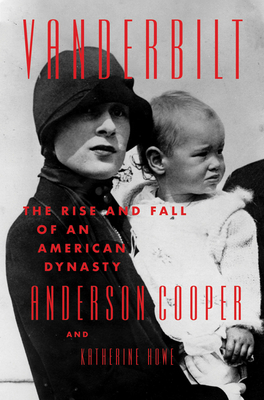
Anderson Cooper, one of America’s most respected journalists, brings readers on a fascinating journey through his own family history in Vanderbilt: The Rise and Fall of an American Dynasty, co-written with historian Katherine Howe. Together, they trace the arc of one of the most powerful families in the United States, from their breathtaking rise in the nineteenth century to their inevitable decline a century later. The result is a sweeping, deeply human portrait of ambition, excess, and the fragile nature of legacy.
The story begins with Cornelius Vanderbilt, an eleven-year-old boy ferrying goods across New York Harbor. Through a mix of shrewdness, ferocity, and sheer willpower, he built two empires in shipping and railroads, ultimately becoming the richest man in America. The book captures his transformation from a tough, unrefined boatman into a titan of industry obsessed with wealth and control. Cooper and Howe paint him as a man who thrived on dominance, feared by his children and admired by his competitors. When he died, he left behind a staggering fortune worth more than two billion dollars in today’s money, but also a family destined to unravel.
His favorite son Billy Vanderbilt expanded that fortune and, with social ambition as fierce as his father’s business drive, fought to secure the Vanderbilts a place among New York’s elite. Shut out by old-money families, Billy built the Metropolitan Opera House to outshine their beloved Academy of Music and forced high society to come to him. The book’s descriptions of Gilded Age opulence are dazzling: sprawling mansions, glittering galas, and the race to outdo every rival in wealth and display.
Yet the wealth that once united the Vanderbilts soon became their undoing. Later generations turned to extravagance and scandal, spending fortunes on yachts, horses, and palaces like The Breakers in Rhode Island. Cooper’s portrayal of Alva Vanderbilt, one of the most flamboyant figures of the era, is particularly vivid. Her legendary costume ball of 1883, costing millions in today’s dollars, marked the height of Vanderbilt splendor. Alva’s fierce determination also made her one of the first women in New York’s high society to divorce her husband and later advocate for women’s rights and suffrage.
The book spans centuries, weaving in moments of American history that shaped and mirrored the Vanderbilt saga. Readers follow the family through the sinking of the Lusitania, the glamorous America’s Cup races, and even the literary world of Truman Capote, whose sharp pen exposed the hypocrisies of the social elite. While some tangents may seem distant from the core story, they enrich the atmosphere of a time when fame, money, and reputation ruled everything.
Cooper’s writing becomes most personal when he turns to his mother, Gloria Vanderbilt. Her life was a mixture of privilege and pain, marked by artistic talent, public scrutiny, and personal loss. Having chronicled her story before in The Rainbow Comes and Goes, Cooper revisits it here with tenderness and reflection, connecting the emotional threads between his family’s glittering past and his own life in modern America.
What makes this book compelling is not just the grandeur of the Vanderbilts but the honesty with which Cooper examines their decline. The fortune that once seemed infinite eventually vanished through greed, vanity, and disconnection from the hard work that had created it. By the twenty-first century, the family that once defined American wealth had become a symbol of its fleeting nature.
While some readers have found the narrative structure a bit uneven, the book’s strength lies in its blend of history, gossip, and introspection. Cooper’s journalistic eye, paired with Howe’s historical expertise, delivers a story that feels both intimate and epic. It is a meditation on how power corrupts, how families fracture, and how stories outlast fortunes.
Vanderbilt: The Rise and Fall of an American Dynasty is not merely a chronicle of wealth lost and won; it is an American parable about ambition, excess, and the price of forgetting where one comes from. Readers of biography, history, and social commentary will find it both engaging and thought-provoking.
If you are drawn to stories of dynasties, legacies, and the people behind them, you can purchase Vanderbilt: The Rise and Fall of an American Dynasty here: Buy on Amazon


